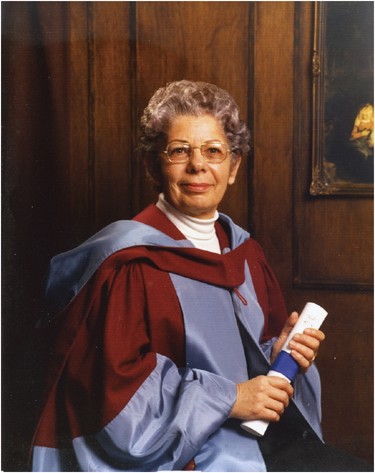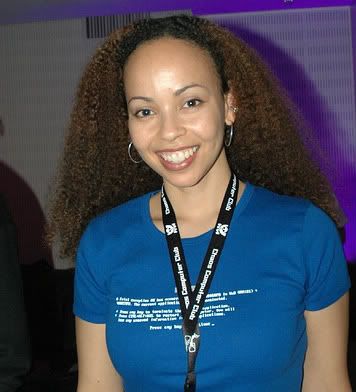
- Select a language for the TTS:
- Italian Female
- Italian Male
- Language selected: (auto detect) - IT
Play all audios:
Dr Marina Seabright, who discovered the method for trypsin G-banding that opened up a new era in medical genetics in 1971, died in late July 2007 not far from the laboratory in which she
made her breakthrough. Her article in the Lancet1 became a citation classic with more than 1294 citations, according to Google Scholar, and was followed by 17 years in which Marina was
instrumental in building up the Wessex Regional Cytogenetics Unit as a major laboratory for cytogenetics in southern England. Marina's parents were from Italy, living in Calabria. She
studied medicine at Palermo, Sicily, where she met and married a young English naval lieutenant, Harold Seabright, whose family came from Hampshire. Her husband brought Marina back to
England, where she applied to Bristol University to continue her medical studies. Owing to the large number of ex-service people applying, she was unsuccessful in gaining entry and
therefore, in 1947, she came to work in the pathology service at Salisbury General Infirmary. She rapidly mastered the laboratory techniques and became an Associate and then a Fellow of the
Institute of Medical Laboratory Technology with her thesis on the differential centrifugation of white blood cells. She was for some years the Senior Technician in Haematology but, in 1965,
she set up the Cytology laboratory and, in the late 1960s, developed an interest in Cytogenetics, her practical skills allowing the production of good chromosome preparations. Marina's
great contribution to Cytogenetics was her technique of trypsin banding. Like a number of other seminal discoveries in Cytogenetics, there were elements of both chance and persistence in her
story, which has not received quite the same detailed attention from recent historians as that given to some of her contemporaries. One day in 1967, she was examining a Leishman-stained
chromosome preparation and was surprised to find that the chromosomes had ‘strange stripes’ across the chromatids. Despite trying to retrace every step of the staining protocol, including
the use of a few drops of the coffee that she had been drinking at the time, she was unable to reproduce the banding pattern, and her senior colleagues unanimously dismissed the striped
chromosomes as artifacts. However, 4 years later, Lore Zech and Torbjorn Caspersson elegantly revealed the fluorescent bands that could be used to identify each chromosome using quinacrine
mustard.2 While appreciating that this was a great step forward, Marina felt that the resolution needed improving and wondered if artificially uncoiling the chromatids before staining them
would enhance the differentiation between the bands. As she remembered trypsin being used to ‘relax’ the coils of Vicia Faba chromosomes in the past, Marina tried trypsin on human material;
a few sets of chromosomes showed both the banding pattern, as observed by her originally in 1967 and were comparable to the new fluorescent bands. In retrospect, Marina believed she must
have produced the original by using a pipette contaminated with trypsin that had been previously used for harvesting a culture of fibroblasts, but this time, she had no doubt about the
significance of her finding. It took only a few days to replicate, refine and standardize the technique. The great value of her method lay in its simplicity, speed, low cost and the ability
to characterise each individual pair of chromosomes with confidence under the light microscope. Trypsin banding rapidly transformed medical genetics and is still the most common method of
chromosome banding used worldwide today. Marina went on to study the effects of radiation on chromosomes and was awarded a PhD by the University of Southampton for this work. Not long after
this, she was appointed Consultant Scientist and Director of the Regional Cytogenetics Unit in Salisbury. Under the guidance of Marina, and as a direct consequence of her enthusiasm, the
Unit thrived and budded off a series of huts and cabins at the rear of the Infirmary. When diagnostic molecular techniques arrived, Marina embraced them, setting the pattern for integration
between cytogenetics and molecular genetics which we now recognize as essential. She became a Member of the Royal College of Pathologists and contributed greatly to the profession as the
first Secretary of the Association of Clinical Cytogenetics and Assistant Editor of the _Journal of Medical Genetics_. She ran a happy and a productive unit and colleagues record that it was
always a pleasure to go to her room and talk about any problem, related or unrelated to cytogenetics. Towards the end of her career, Marina became a familiar figure at international
meetings, which suited her gregarious personality, her interest in people and her forthright, incisive manner of expressing her opinions. Few who met her will forget the physically tiny but
seemingly larger than life figure with the gruff voice and strong Italian accent. As her retirement approached in 1987, there was general concern that any replacement would seem dull and
ordinary in comparison, but Marina was successful in recruiting Professor Patricia Jacobs who was able to build on the foundations that Marina had laid and use the excellent records of the
laboratory as the basis for research on a wide range of cytogenetic topics. Marina Seabright retired from her appointment as Director on 31 December 1987. On the same day, her appointment as
an Officer of the Order of the British Empire, for her contribution to cytogenetics, was announced in the New Year Honours list. REFERENCES * Seabright M : A rapid banding technique for
human chromosomes. _Lancet_ 1971; 2: 971–972. Article CAS Google Scholar * Caspersson T, Lomakka G, Zech L : The 24 fluorescence patterns of the human metaphase chromosomes—distinguishing
characters and variability. _Hereditas_ 1971; 67: 89–102. Article Google Scholar Download references ACKNOWLEDGEMENTS We are indebted to Marina herself for the Citation Classic article
she wrote in 1981, which is held at the University of Pennsylvania Garfield Library and can be accessed via http://garfield.library.upenn.edu/classics1981/A1981LH21000001.pdf. We are also
grateful to the late Dr Robert Pinkerton for the profile of Dr Marina Seabright written on her retirement for the Bulletin of the Salisbury Medical Society. AUTHOR INFORMATION AUTHORS AND
AFFILIATIONS * Wessex Regional Genetics Laboratory, Salisbury NHS Foundation Hospital, Salisbury District Hospital, Salisbury, UK John Barber, Annette Cockwell, Tony Herbert, Nick Dennis,
John Harvey & Alan McDermott Authors * John Barber View author publications You can also search for this author inPubMed Google Scholar * Annette Cockwell View author publications You
can also search for this author inPubMed Google Scholar * Tony Herbert View author publications You can also search for this author inPubMed Google Scholar * Nick Dennis View author
publications You can also search for this author inPubMed Google Scholar * John Harvey View author publications You can also search for this author inPubMed Google Scholar * Alan McDermott
View author publications You can also search for this author inPubMed Google Scholar RIGHTS AND PERMISSIONS Reprints and permissions ABOUT THIS ARTICLE CITE THIS ARTICLE Barber, J.,
Cockwell, A., Herbert, T. _et al._ In memoriam: Dr Marina Seabright. _Eur J Hum Genet_ 15, 1191–1192 (2007). https://doi.org/10.1038/sj.ejhg.5201928 Download citation * Published: 25 October
2007 * Issue Date: November 2007 * DOI: https://doi.org/10.1038/sj.ejhg.5201928 SHARE THIS ARTICLE Anyone you share the following link with will be able to read this content: Get shareable
link Sorry, a shareable link is not currently available for this article. Copy to clipboard Provided by the Springer Nature SharedIt content-sharing initiative







